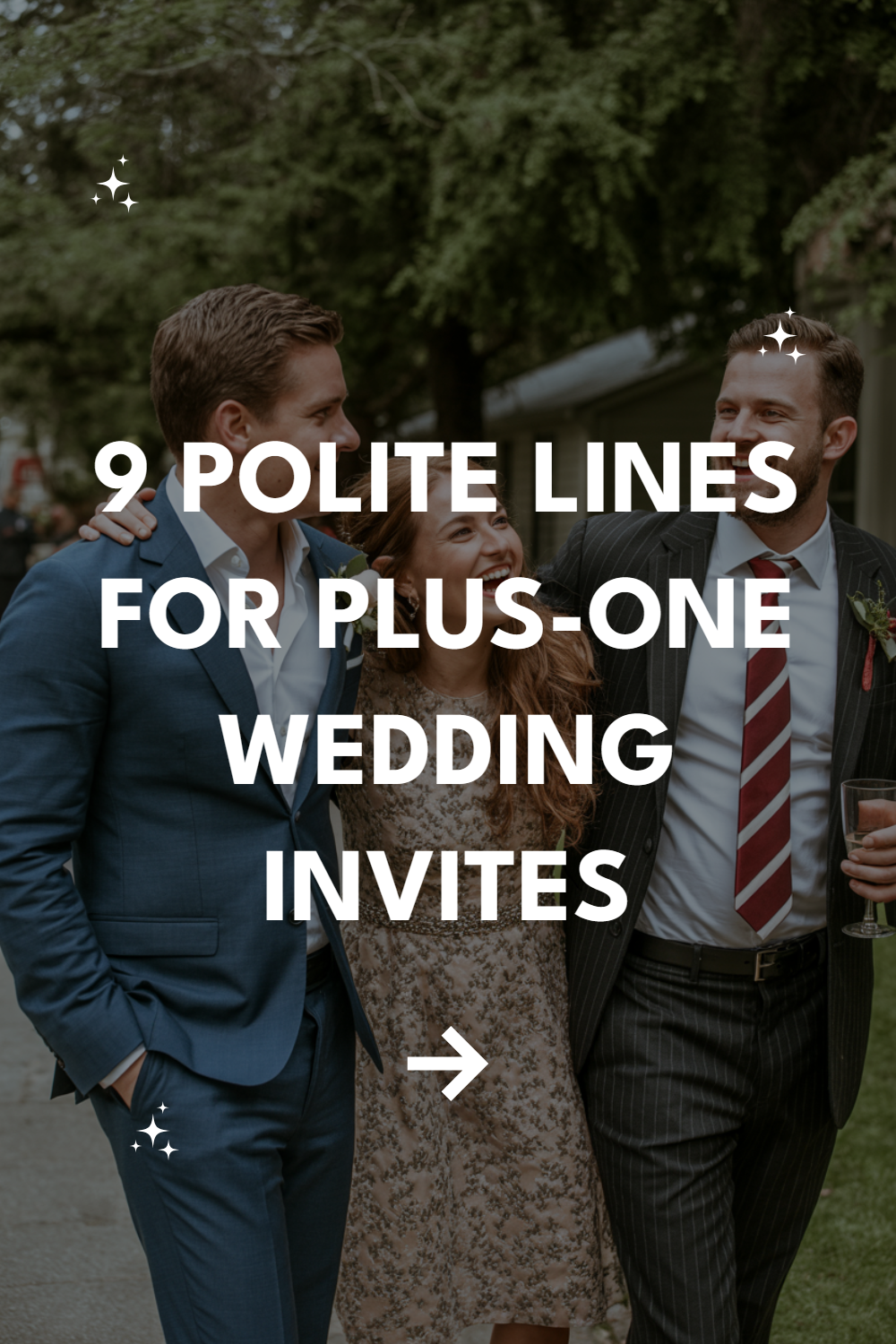Wedding planning brings countless decisions, but few feel as delicate as navigating plus-one invitations. The wrong wording can create confusion, hurt feelings, or awkward conversations that linger long after the last dance.
Getting this right requires finesse—you want to be clear without being harsh, inclusive without overextending your budget, and gracious while maintaining boundaries.
1. The Gracious Boundary Setter
“We’re planning an intimate celebration and have reserved a seat specifically for you.”
This line works beautifully because it frames the limitation as intentional intimacy rather than budget constraints. Your guest feels specially chosen rather than restricted.
The word “specifically” adds weight to their individual importance. It suggests thoughtful consideration went into every invitation, which honestly, it probably did.
2. The Warm Space Constraint
“Due to venue limitations, we’re unable to accommodate additional guests, but we’d love to celebrate with you.”
Venue restrictions feel less personal than other limitations. Everyone understands that spaces have capacity limits, making this an easy boundary for guests to accept.
The phrase “celebrate with you” keeps the focus on your relationship with that specific person. It reinforces that their presence matters, even if they’re coming solo.
3. The Honest Budget Conversation
“We’re keeping our guest list small to stay within our budget, and we hope you’ll join us for this special day.”
Sometimes straightforward honesty hits differently than elaborate explanations. Most people understand wedding costs, and this transparency can actually strengthen relationships.
The simplicity of this message shows respect for your guest’s intelligence. You’re not making excuses—you’re sharing a reality that many couples face.
4. The Inclusive Alternative
“While we can’t extend plus-ones, we’re planning a casual get-together the day after where partners and friends are welcome.”
This line acknowledges the limitation while offering a genuine alternative. It shows you want to include their important people, just not at the main event.
Planning that follow-up gathering does require extra effort, but it can transform potential disappointment into anticipation. Plus, post-wedding brunches often become the most relaxed, memorable celebrations.
5. The Appreciative Acknowledgment
“We know it’s not ideal to attend solo, but your presence would mean the world to us on our wedding day.”
Acknowledging the awkwardness head-on can be surprisingly effective. It shows you understand their perspective while expressing how much they matter to you.
This phrasing works especially well for close friends or family members. It’s vulnerable and honest, which often resonates more than polished explanations.
6. The Celebratory Focus
“We’re excited to celebrate with our closest family and friends, and we hope you can be part of our special day.”
Framing the wedding as a gathering of your inner circle makes the guest list feel curated rather than restricted. It positions attendance as membership in an exclusive, meaningful group.
The excitement in this message is contagious. Instead of dwelling on limitations, it emphasizes the joy of the occasion and their role in it.
7. The Gentle Clarification
“We’re having an adults-only celebration and aren’t able to accommodate additional guests beyond those listed on the invitation.”
This line works particularly well when you’re also limiting children. It creates a consistent policy that feels less arbitrary than random plus-one restrictions.
Mentioning “those listed on the invitation” provides clear guidance. Guests know exactly who’s invited without having to guess or ask follow-up questions.
8. The Relationship-Focused Message
“We’re limiting our guest list to immediate family and longtime friends, and we’d love to have you there.”
This message explains the criteria without making it feel exclusionary. It suggests a thoughtful process rather than random cuts.
Positioning someone as a “longtime friend” feels honoring. It acknowledges the depth of your relationship and explains why they made the cut when others didn’t.
9. The Graceful Conclusion
“We understand if this doesn’t work for your schedule, but we hope you’ll be able to join us.”
Sometimes the most gracious thing is acknowledging that your restrictions might not work for everyone. This line gives people permission to decline without guilt.
This phrasing removes pressure while keeping the door open. It shows maturity and understanding that not every invitation will work for every person’s circumstances.
Delivery Methods That Matter
The medium matters almost as much as the message. Phone calls work best for immediate family and very close friends, especially if you expect pushback or questions.
Text messages can work for casual friends, but they risk seeming impersonal for important relationships. Email strikes a middle ground—more formal than texting, less intense than calling.
Written notes included with save-the-dates give people maximum time to process. They can read, re-read, and adjust expectations without feeling put on the spot.
Timing Your Conversations
Earlier is almost always better than later. Having these conversations when you send save-the-dates prevents people from making assumptions or plans.
Waiting until formal invitations go out can create awkwardness. People might have already told their partners to expect an invitation or made travel arrangements.
Six to eight months before the wedding gives everyone time to adjust expectations. It also shows you’ve been thoughtful about these decisions rather than making last-minute cuts.
Handling Pushback Gracefully
Some people will push back regardless of how politely you phrase things. Prepare yourself mentally for guilt trips, arguments about fairness, or comparisons to other weddings.
Stay calm and repeat your boundary. “I understand this is disappointing, but we’re not able to accommodate additional guests.” Don’t over-explain or justify repeatedly.
Sometimes relationships shift after these conversations. That’s painful but not necessarily your fault—weddings have a way of revealing people’s true priorities and respect levels.
Final Thoughts on Wedding Diplomacy
Wedding planning tests relationships in unexpected ways. The people who respond graciously to your plus-one policies often surprise you, while others you thought would understand might react poorly.
These conversations, difficult as they are, help set the tone for your marriage. Learning to communicate boundaries clearly and kindly serves you well beyond wedding planning.
Your wedding day will be better when surrounded by people who respect your decisions and want to celebrate with you, regardless of the circumstances. That’s worth a few uncomfortable conversations along the way.


